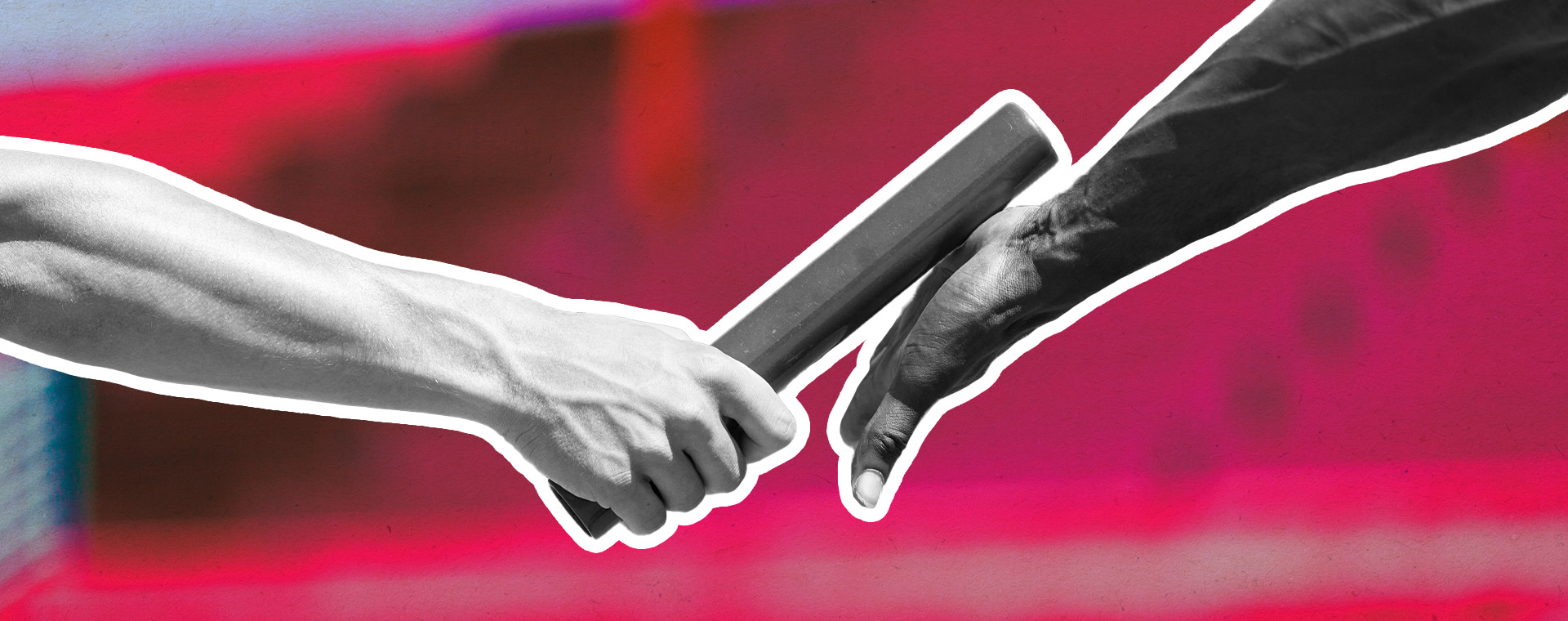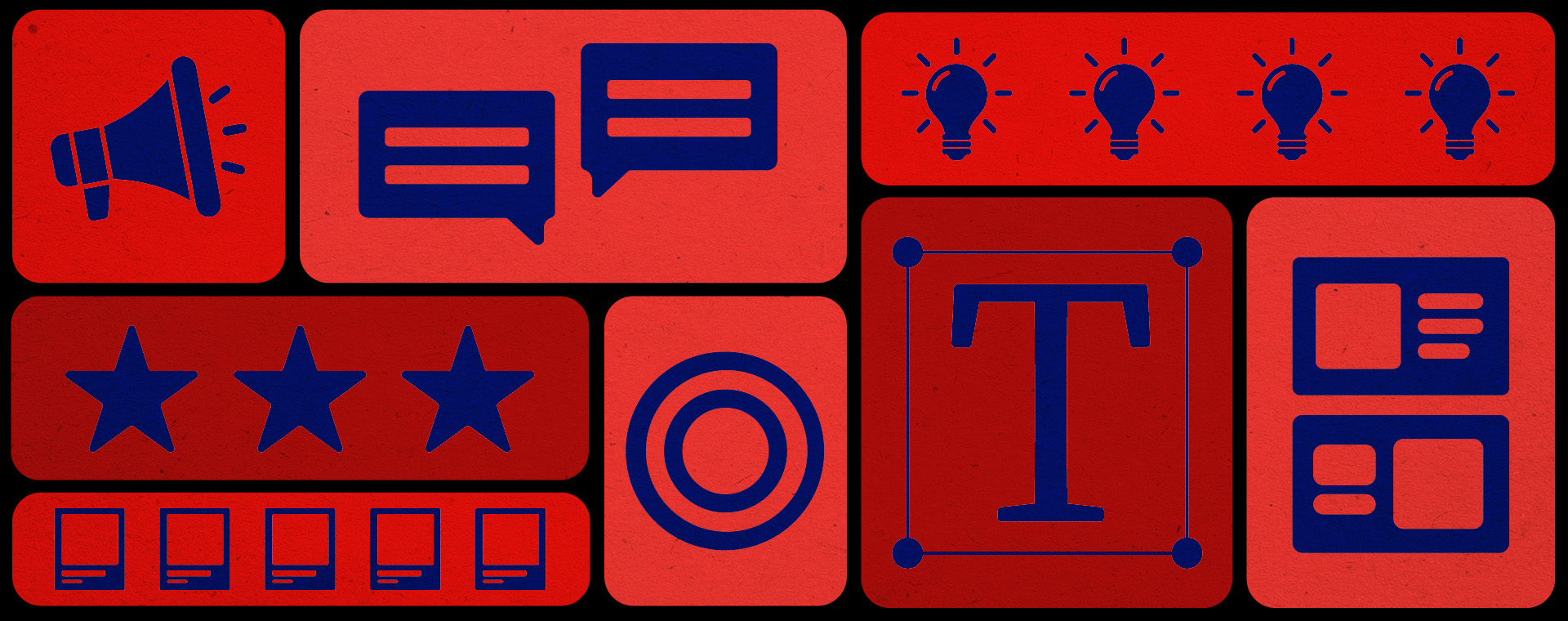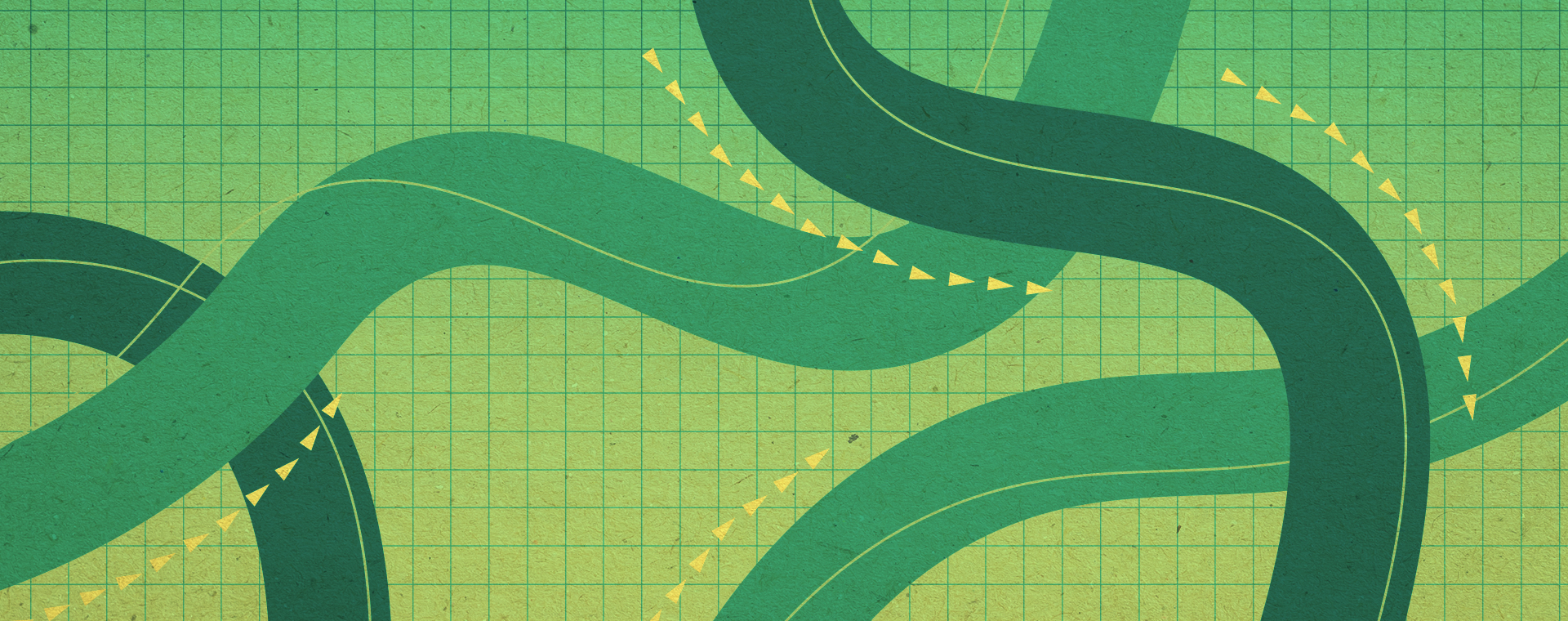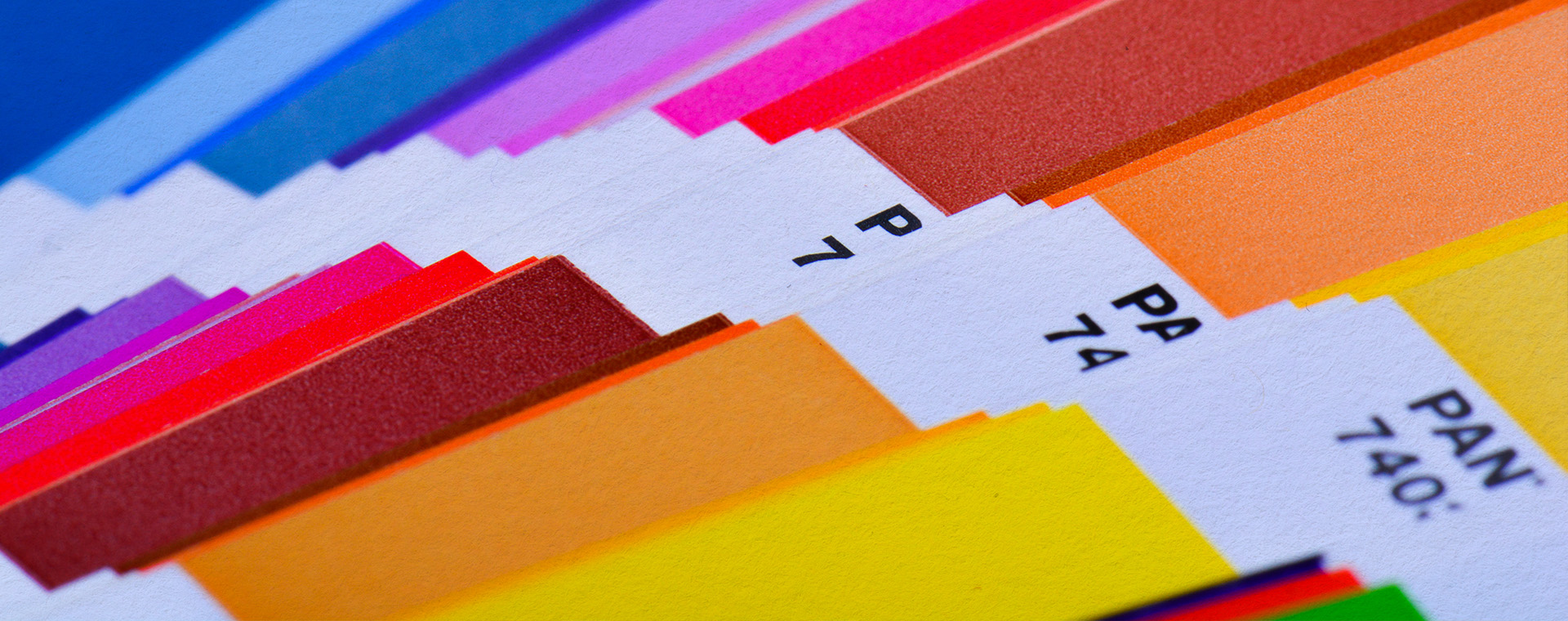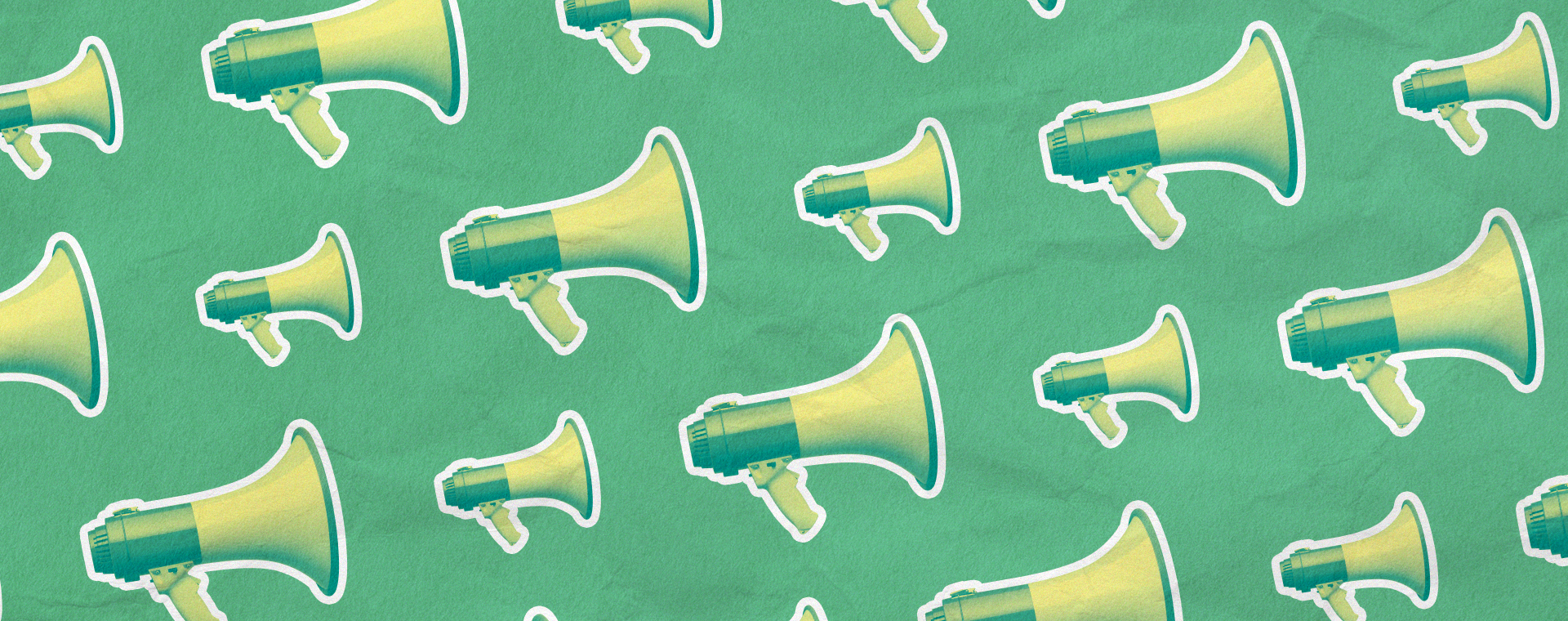How to set yourself up for a successful B2B branding or rebranding project
By: Sarah Rosenquist
July 2, 2025 | Reading Time: 8 mins
New company name? New product? An old brand that needs a refresh?
If you’re in any of these transition stages, you know they can be tough to navigate. It’s like when you go through a bad breakup and feel compelled to change your hairstyle and reinvent yourself. Where do you start? Who do you trust to work with you on this transformation? Luckily for you, I’ve been through rebounding and rebranding and have your next steps all mapped out.
Define who you are before starting a branding project
A good brand communicates a lot of things on a lot of levels. Way before any design gets done, you should determine what you want to communicate about your company or product. Eventually, you’ll need to bring in an internal designer, agency, or freelancer. So get prepared to answer these questions:
- What does your company do? What products or services are included in the new brand?
- Who is your target market? Do you havepersonas for each key audience?
- What are your values as an organization?
- Why do your customers love you?
- If the company/product were a person, how would you describe them?
- If the company/product were a person, how would they talk?
These basic questions are an important starting point for the brand design project. A good branding expert will follow up and dig into more detail about your answers. What you say will inspire creative professionals to explore certain shapes, colour schemes, or type styles. For example, it’s quite common for B2B companies in technical industries like AEC (architecture, engineering, and construction) to prefer sharp corners because it reflects precision. Other industries like healthcare often steer away from red and towards blue or green because they evoke more calming emotions. It’s helpful to have this baseline. Then the conversation shifts to how you’ll stand out if that’s what everyone else is doing.
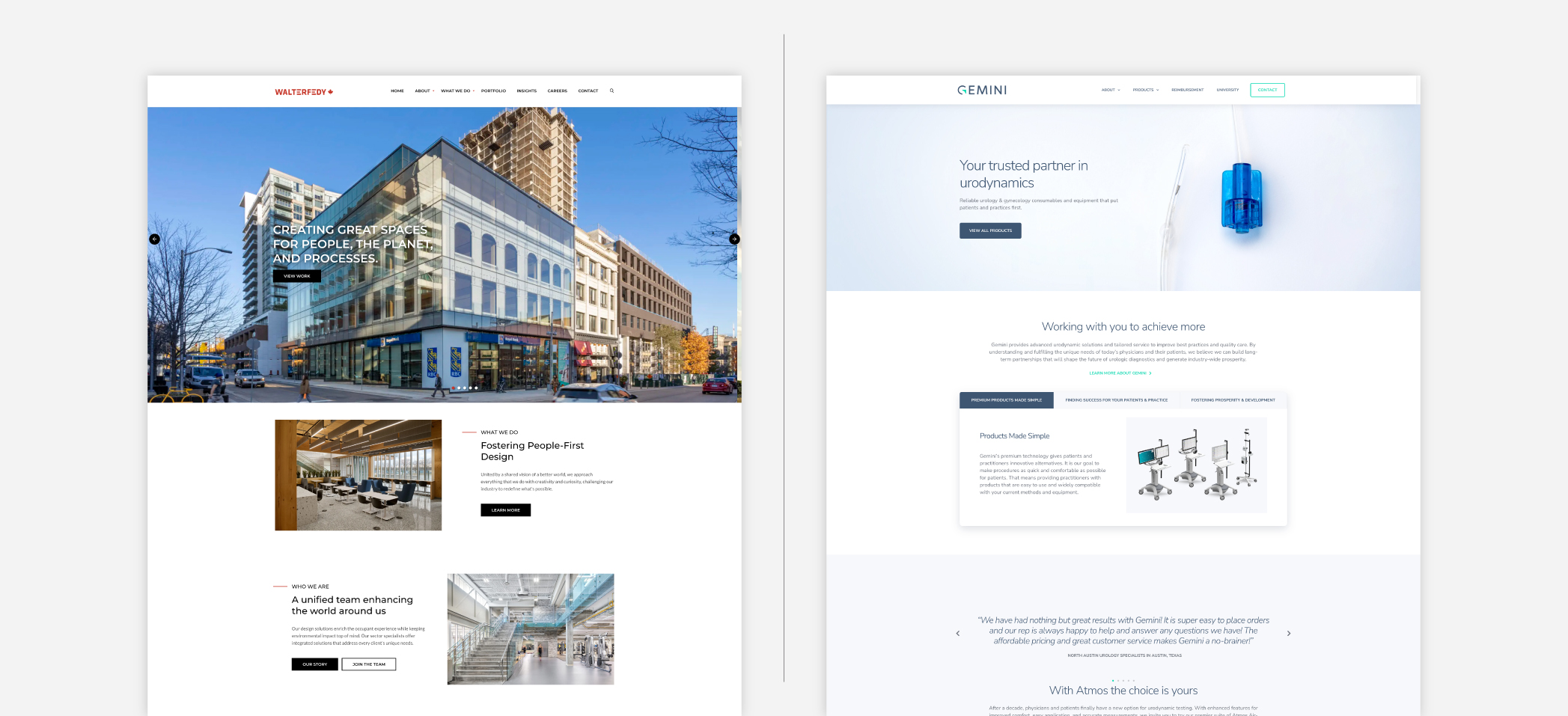
Draw a clear line about who you aren’t before starting the branding process
Like that post-breakup makeover, a rebrand is all about change that highlights what makes you unique. It’s important to take an even deeper look at your company, product, or service and think about how its identity is differentiated from its old self and its competitors. Here are some questions to get you started:
- Who are the main competitors? Why do potential customers choose them?
- What values aren’t important to your company/product? What do you intentionally not prioritize?
- If the company/product were a person, what’s something they’d never do?
- If the company/product were a person, what’s something they’d never say?
At this point in the brand design process, you’re carving out some key areas for the creatives working on your rebrand to explore. You may notice that your competition is heavily focused on using cool tones, thin lines, and sharp corners. It gives them a balance of being approachable and calm yet still precise and attentive to details. Your new brand can still stand out if you also identify with cool tones and approachability by using other design elements that amplify those feelings, such as rounder shapes, organic textures, and photography that prioritizes candid shots of people.
If you think those were easy and are craving more, you can take a look at a sample of the questions we start with when doing discovery:
Get prepared and start the planning for your branding project
With a good sense of who you are, you can shift your attention into what the process of making a new brand for (or rebranding) your B2B company might look like. Here’s where we start the conversation:
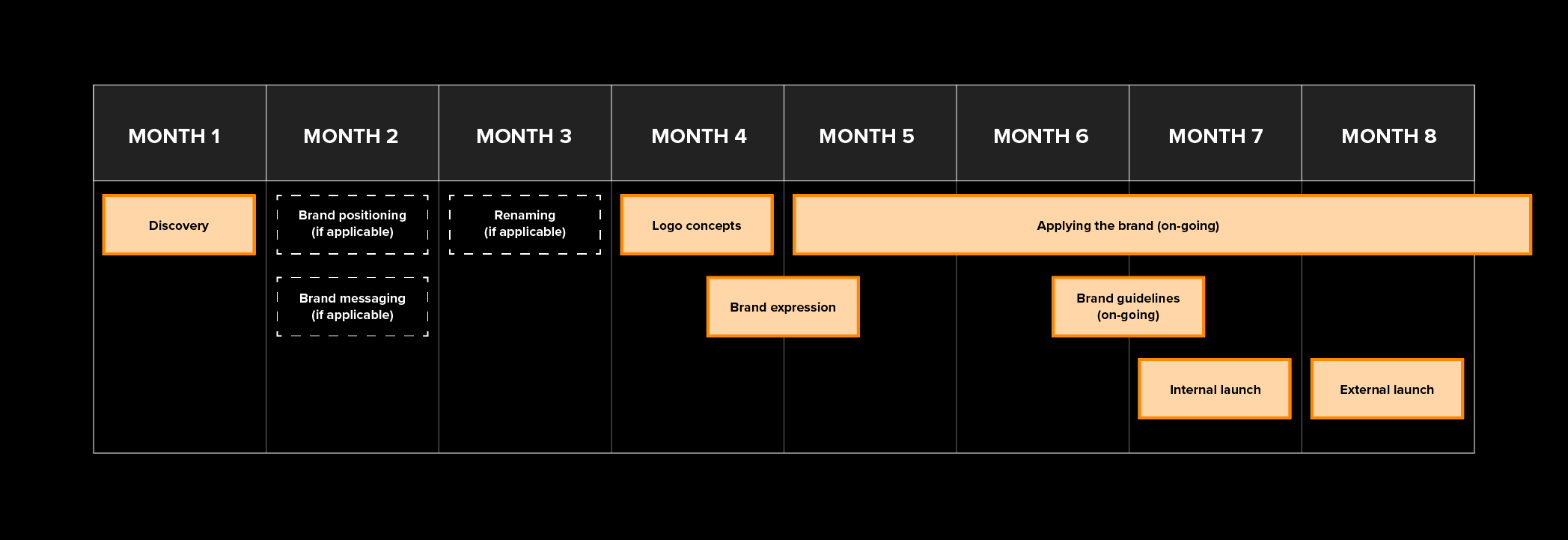
If you haven’t started the project and are setting expectations that your new brand will be fully live in less than 6 months, I think it’s important to take a step back. We’ve seen a lot of companies in this situation, and when we talk to them about the nuance of the work that goes into it, we re-align on more realistic timelines. Is it possible to launch a brand faster? For sure. New companies are an example where the branding process can go faster because they have fewer existing assets to apply the brand to. Most B2B brands aren’t in this situation though and have to think about their website, their print pieces, their tradeshow booths, their downloadable content, reports, newsletters, and much more.
Consider key variables in a branding project
There are many variables that affect the scope of the project and will impact timelines. The biggest factors tend to be:
- Is the name up for debate? If it is, then there’s work to do on that before you can get to the rest of the branding.
- Strategy & guidance: If you don’t have core documents that outline your company strategy, competitive landscape, messaging strategy, etc. there will be more work for your partner to do to be able to come up with logo concepts and brand expressions that you’ll love.
- Size of company: Larger companies have more complexities and stakeholders that need to be involved in the process. There may be sub-brands to consider for products.
- Size of marketing department: Companies that invest more in marketing will have more marketing material that the new brand will need to be applied to. A thorough inventory of your assets is a critical piece of the rebranding planning process. We recommend assigning a priority to each item that your new brand will be applied to. Is it needed for day 1 launch like a website or new email signature? Top priority. Is it the annual report that isn’t going to be started until 4 months after the launch? Save it for later. There’s always more to do after a rebrand.
Gather the right people
Branding is a very collaborative process, so hopefully you haven’t been tasked to rock this project solo. From the start, a successful branding project should involve 3-5 core team members. If the team is smaller than that, you’re probably missing out on important direction, ideas, and feedback. If the team is bigger than that, you’ll probably run into analysis paralysis and be drowned in competing thoughts.
Building the perfect branding project team
In our years of helping B2B companies with their branding, we’ve found the following roles & skillsets to be the most critical:
- Senior Leadership: This person is integrated with all functions of the business at a strategic level. They’re typically rocking a VP, Director, or C-Suite title.
- Brand Champion: This person generally has a design or creative background and likely is the owner of your current brand guidelines.
- Marketing Lead: This person will have a good understanding of all of your marketing touchpoints across web, print, social, email, events, etc.
- Project Manager: This person will keep your team on track with your deliverables on the project.
Make sure each team member has a deep understanding of your company or product, the marketplace it competes in, and maybe even some basic understanding of design. Most importantly, know how you’re going to make the final call—who is the decision-maker? A RACI chart might be helpful in making this clear:
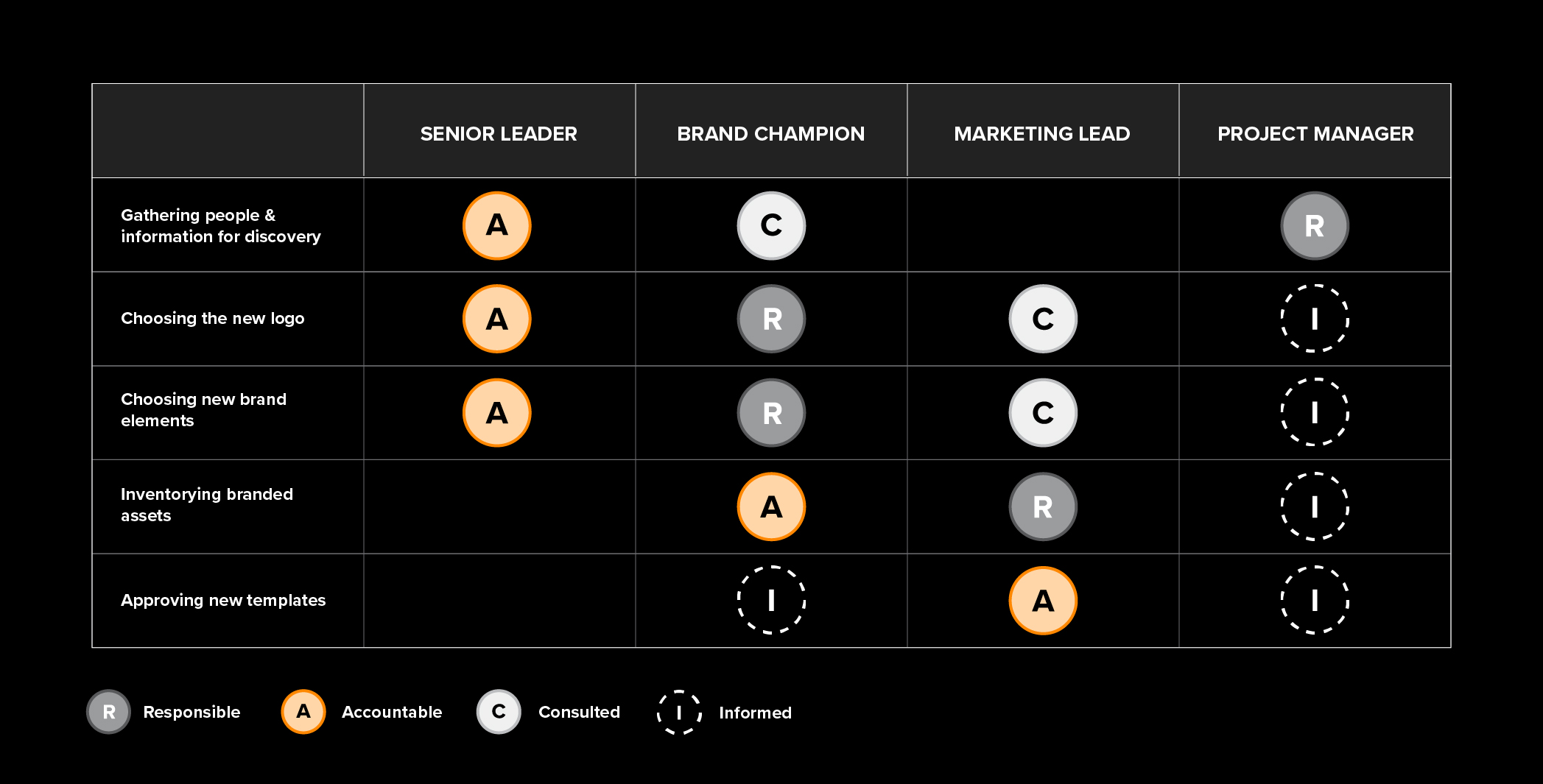
Make plans for sharing the branding work you’re doing
That said, branding does impact the whole company, so you will want to think about how to involve more folks throughout the rebranding process. The sooner you think about these things, the smoother it’ll be down the road. Some of the ways we’ve worked with our partners going through a new brand rollout have included:
- Discovery surveys: Gathering input and ideas from a larger group at the start may be helpful so they’re aware this project is underway.
- Brand ambassadors: Pick key team members across groups that are more involved in the project as it progresses, so they can help you tell the story of the new brand once the whole company is aware.
- Internal launch party: Before the new brand is debuted to the world, incorporate storytelling about the process and celebrate the new brand in a townhall or company event.
You don’t need to have all of these things lined up before you embark on the process of rebranding your B2B organization. The more you understand about the full undertaking of a brand design project, the better prepared you’ll be. This is especially true if you’re planning to bring on a expert to make the new brand and then manage it internally after launch.
Find the right partner
Bringing in strategic and design expertise to help with a branding project can be daunting. How do you know you’re picking the right partner to create your company’s very public image? Creating a request for information (RFI) or request for proposal (RFP) for the branding project is an excellent first step. It forces you to put to paper your expectations and what you’re looking for.
Build out your branding project’s RFP
The core components of a good RFP for a branding project will include:
- Background information: This should detail information about your company and why you want to do a branding project
- Scope expectations: This sets out what you’re looking for in a partner and is the part you should spend the most time on. It’s OK if you don’t have every single piece planned. A good partner should be able to help you with that. The more you share, the more you can talk through those details.
- Working style & culture: The work itself isn’t the only thing that matters; whether your teams can collaborate effectively is key.
- Timelines: This should set clear expectations around whether or not you’re taking questions from vendors, when the proposal is due, when you’ll select a vendor, and timelines for the brand design project itself
- Process transparency: Anything you can share about how you’ll be evaluating vendors and choosing your partner is always appreciated.
Once you have that document ready to go, you can invite agencies to respond. Some organizations will have to post the RFPs publicly, while others will only share them with companies they’ve pre-qualified and want to receive proposals from.
Ask deep questions when interviewing potential branding partners
While reviewing a branding RFP response or interviewing potential branding partners, make sure they’re able to speak to the following:
- What’s your process for coming up with a brand? If they don’t have a well-defined set of steps to understand your company and its audiences, it’s a red flag. Also, look for branding agencies that are willing to show multiple ideas and concepts. Anyone who promises to nail it on the first try is full of it.
- How do you handle feedback? Contrary to popular belief, you don’t want a branding agency that will take and implement every single piece of feedback. You’re hiring the agency for their expertise. Look for signs that the company will challenge your teams’ ideas and tell you when and why something might not be a good move.
- How have you been successful in the past? Make sure a branding agency has a wide portfolio when it comes to branding work. Do all the projects sort of look the same? Or does every brand feel like it was carefully and thoughtfully created to reflect each company’s unique aspects? Sure there are design trends that probably carry through, but similar typography or colour throughout a portfolio should be a red flag.
- How do you ensure the new brand is applied effectively? Most will talk about the importance of brand guidelines and templates, but dig in more here. How well do they understand the nuance of the different pieces across web, social, email, print, tradeshow booths, signage, etc.? Does their plan promise to get everything updated all at once, or is it a phased approach?
- How do you manage the project? Ensuring a brand design project is on time and budget is important. What happens when plans change? How often do you collaborate? How many reviews do you get?
If you’d like to start that conversation with us, you can get a deck with a quick overview of our approach:
Good luck and happy (re)branding!
